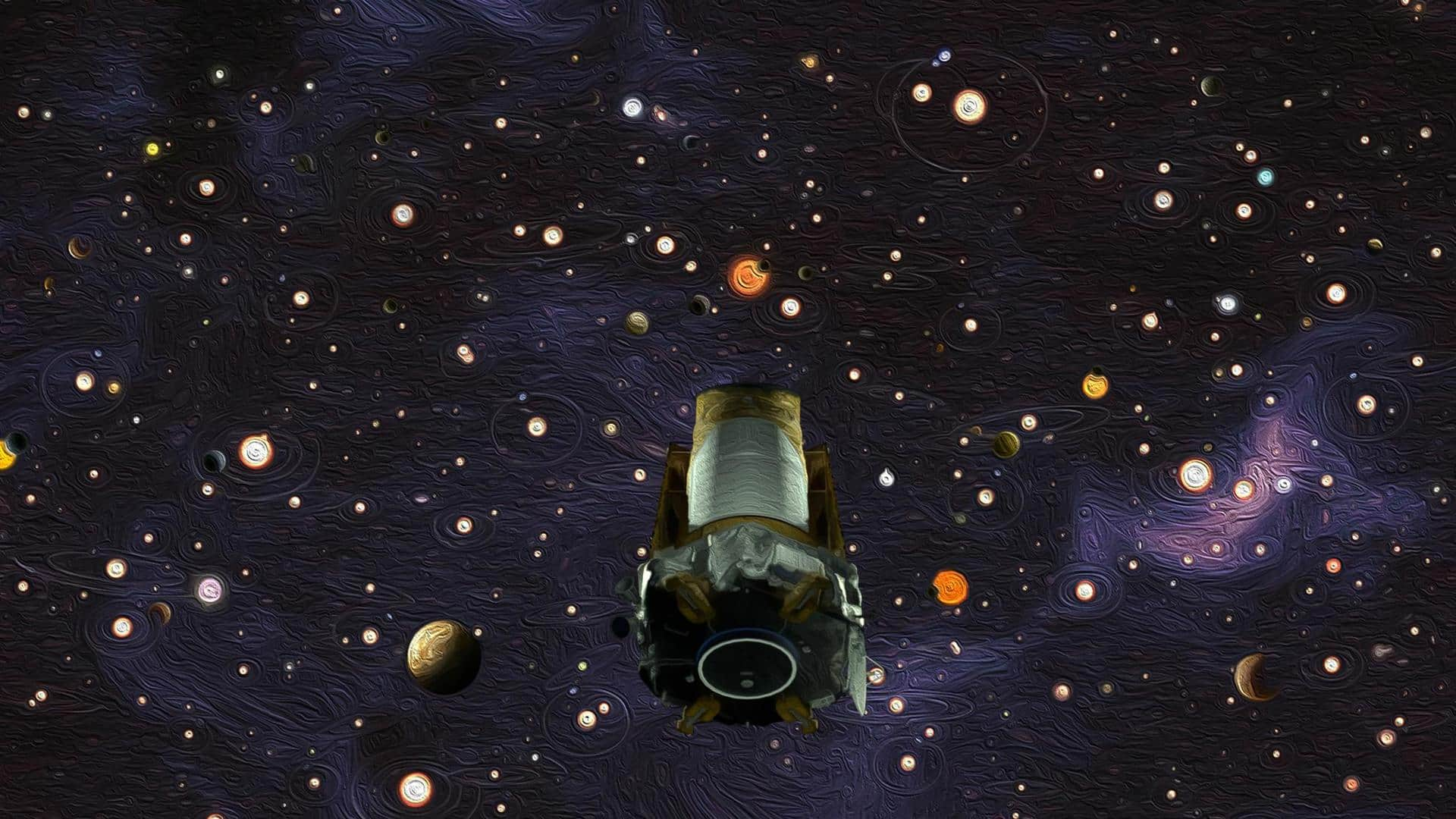
Top discoveries of NASA's Kepler telescope: Exoplanets and more
What's the story
Space telescopes give us stunning glimpses of the cosmos and help astronomers gain better insights into the universe. One such prolific space observatory was NASA's Kepler. During the roughly 9.5 years that the now-retired telescope spent in orbit, it discovered more than 2,600 exoplanets and observed over half a million stars. Here, we take a look at Kepler's top discoveries.
One
Kepler was designed to hunt for exoplanets
Kepler was built to study a portion of the Milky Way galaxy in order to search for exoplanets, which lie outside our solar system. Kepler data revealed that 20-50% of the stars in the night sky may have small planets, similar in size to Earth, orbiting them within a habitable distance where liquid water, an essential ingredient of life, may exist.
Launch
How did Kepler probe the galaxy?
Kepler's scientific goals also included determining the properties of stars that have planetary systems. The telescope probed for exoplanets by observing transits, tiny dips in the brightness of a star that occurs when a planet crosses in front of its body, explains NASA. Kepler, which took to space in March 2009, was terminated in October 2018 after it ran out of fuel.
Two
Kepler discovered its first planetary system in April 2010
In April 2010, Kepler discovered its first planetary system, where more than one planet was found transiting the same star, called Kepler-9. The telescope surveyed 156,000 stars over seven months which led to this discovery. Among the three exoplanets in this system lies Kepler-9 d which astronomers classify as a Super-Earth, planets that measure larger than Earth but are smaller than Neptune.
Three
The telescope made a major discovery in 2011
In December 2011, the Kepler telescope found its first planet lying within the habitable zone of its host star. This exoplanet named Kepler-22b is also a super-Earth, estimated to have a 2.4 times bigger diameter than Earth, and lies 600 light-years away. Studies suggest the planet may be covered by an ocean, serving as a promising candidate in the search for life beyond Earth.
Four
Researchers found new planets from Kepler's final dataset
Besides looking for exoplanets, Kepler also observed supernovas, which are powerful explosions of stars. Recently, researchers took a look at the final set of data from the Kepler telescope and found two new exoplanets. The newly discovered planets are smaller than Neptune and lie 400 light-years from Earth. This marks the last discoveries by Kepler before it was shut down in late 2018.
Official words
'Kepler was good at planet-hunting till the end'
"These are fairly average planets in the grand scheme of Kepler observations," said Elyse Incha, the lead author of the new study, in a statement. "But they're exciting because Kepler observed them during its last few days of operations. It showcases just how good Kepler was at planet hunting, even at the end of its life," she added.